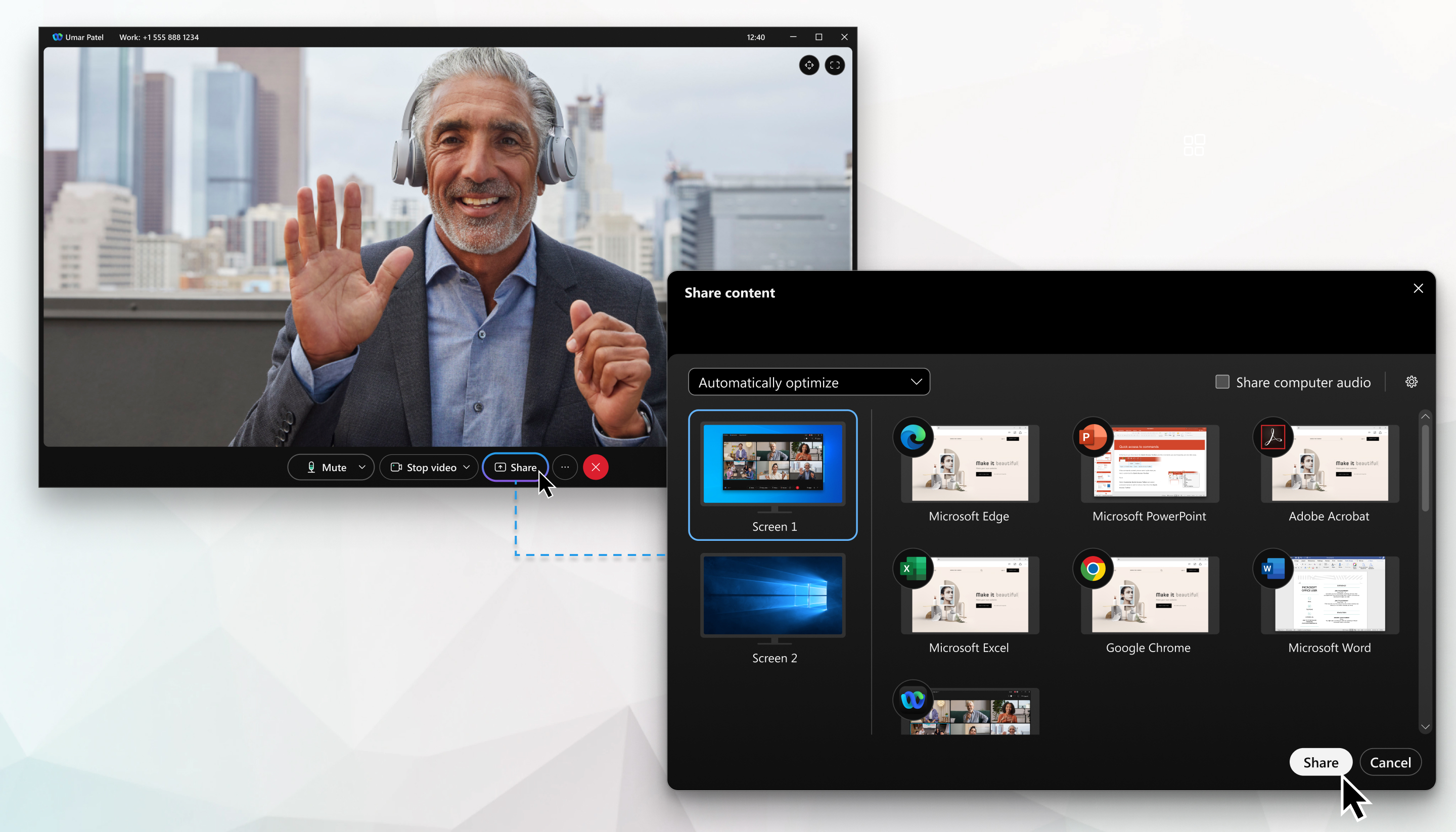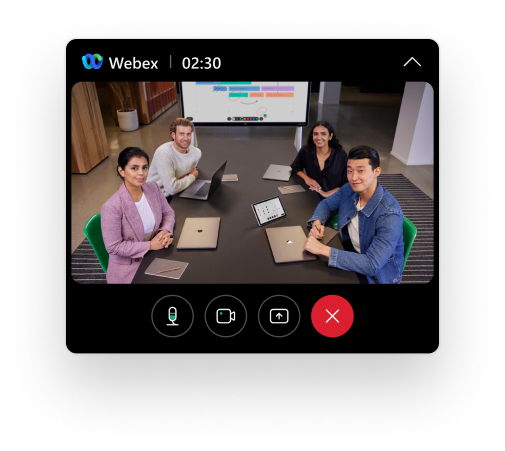When you're on a phone call with someone in your company who's also using Webex App, you can share content and everyone can see what's being talked about. Webex App suppresses notifications for incoming messages or calls when you're sharing content.

If you’re on a phone call with someone who is connected to a Room OS device, they will not receive the screen share. |
If you prefer, you can share only a portion of your screen.
| 1 |
To start sharing your screen, click Share | ||
| 2 |
Select how you want to Optimize your shared content from the drop-down menu:
| ||
| 3 |
Select Share computer audio to allow others to hear your computer audio in addition to your microphone audio. Mac only— Webex App needs an extension to share your computer audio. If you don't have this extension, then it automatically downloads when you click Share computer audio. You must have administrator permissions on your computer to install the extension. | ||
| 4 |
Select the screen or application to share. For applications, share all or an individual application window. Hold Shift to select multiple applications but only one application is shared at a time. Mac only—You can share the screen from your iPhone or iPad to your Mac. Select iPhone or iPad Screen and then follow the instructions to connect a USB cable and trust this computer. If you don't see the app that you want to share, scroll to see all your open apps or
drag the resize handle | ||
| 5 |
Preview what you're sharing at the top of the screen. Make sure that what's showing is all you want to share.
| ||
| 6 |
While you're sharing, you can select the following:
| ||
| 7 |
Use the floating panel to conveniently access the following options:
|
| 1 |
During a phone call, tap More | ||||||||||
| 2 |
Choose your Optimize option:
| ||||||||||
| 3 |
Choose what you want to share:
| ||||||||||
| 4 |
When you're finished, tap Stop sharing. |
| 1 |
During a phone call, tap More | ||||||||||
| 2 |
Choose your Optimize option:
| ||||||||||
| 3 |
Choose what you want to share:
| ||||||||||
| 4 |
When you're finished, tap STOP SHARING. |
Before you begin
You must be connected to your desk phone for the call.
You can only share in a call between you and one other person.
The other person on your call must also be connected to their desk phone for the call in Webex App.
| 1 |
When you're on a phone call and you're connected to your desk phone, select Share | ||
| 2 |
Select how you want to Optimize your shared content from the drop-down menu:
| ||
| 3 |
Select Share computer audio to allow others to hear your computer audio in addition to your microphone audio. Mac only— Webex App needs an extension to share your computer audio. If you don't have this extension, then it automatically downloads when you click Share computer audio. You must have administrator permissions on your computer to install the extension. | ||
| 4 |
Select the screen or application to share. | ||
| 5 |
Preview what you're sharing at the top of the screen. Make sure that what's showing is all you want to share.
| ||
| 6 |
While you're sharing, you can select the following:
| ||
| 7 |
Use the floating panel to conveniently access the following options:
|
 on any of the four corners or sides to make the window larger
or smaller.
on any of the four corners or sides to make the window larger
or smaller. to allow someone to
to allow someone to  to show the active speaker's video only.
to show the active speaker's video only. to show the videos of the meeting participants.
to show the videos of the meeting participants. to hide all thumbnail videos. The name of the active speaker shows in the floating
panel.
to hide all thumbnail videos. The name of the active speaker shows in the floating
panel.
 >
>  to rotate the image.
to rotate the image. 
